
-
 US Afghans in limbo after Washington soldier attack
US Afghans in limbo after Washington soldier attack
-
England lose Duckett in chase of record 435 to keep Ashes alive

-
 Australia all out for 349, set England 435 to win 3rd Ashes Test
Australia all out for 349, set England 435 to win 3rd Ashes Test
-
US strikes over 70 IS targets in Syria after attack on troops

-
 Australian lifeguards fall silent for Bondi Beach victims
Australian lifeguards fall silent for Bondi Beach victims
-
Trump's name added to Kennedy Center facade, a day after change
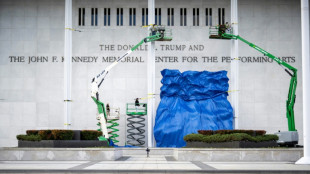
-
 West Indies 206-2, trail by 369, after Duffy's double strike
West Indies 206-2, trail by 369, after Duffy's double strike
-
US strikes Islamic State group in Syria after deadly attack on troops

-
 Epstein files opened: famous faces, many blacked-out pages
Epstein files opened: famous faces, many blacked-out pages
-
Ravens face 'special' Patriots clash as playoffs come into focus

-
 Newly released Epstein files: what we know
Newly released Epstein files: what we know
-
Musk wins US court appeal of $56 bn Tesla pay package

-
 US judge voids murder conviction in Jam Master Jay killing
US judge voids murder conviction in Jam Master Jay killing
-
Trump doesn't rule out war with Venezuela

-
 Haller, Aouar out of AFCON, Zambia coach drama
Haller, Aouar out of AFCON, Zambia coach drama
-
Nasdaq rallies again while yen falls despite BOJ rate hike

-
 Bologna win shoot-out with Inter to reach Italian Super Cup final
Bologna win shoot-out with Inter to reach Italian Super Cup final
-
Brandt and Beier send Dortmund second in Bundesliga

-
 Trump administration begins release of Epstein files
Trump administration begins release of Epstein files
-
UN Security Council votes to extend DR Congo mission by one year

-
 Family of Angels pitcher, club settle case over 2019 death
Family of Angels pitcher, club settle case over 2019 death
-
US university killer's mystery motive sought after suicide

-
 Rubio says won't force deal on Ukraine as Europeans join Miami talks
Rubio says won't force deal on Ukraine as Europeans join Miami talks
-
Burkinabe teen behind viral French 'coup' video has no regrets

-
 Brazil court rejects new Bolsonaro appeal against coup conviction
Brazil court rejects new Bolsonaro appeal against coup conviction
-
Three-time Grand Slam winner Wawrinka to retire in 2026

-
 Man Utd can fight for Premier League title in next few years: Amorim
Man Utd can fight for Premier League title in next few years: Amorim
-
Pandya blitz powers India to T20 series win over South Africa

-
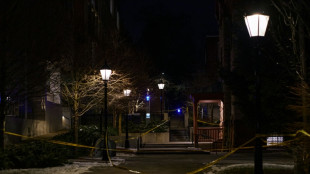 Misinformation complicated Brown University shooting probe: police
Misinformation complicated Brown University shooting probe: police
-
IMF approves $206 mn aid to Sri Lanka after Cyclone Ditwah
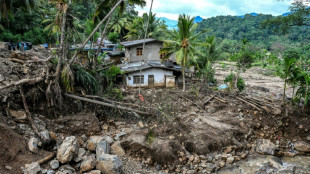
-
 Stocks advance as markets cheer weak inflation
Stocks advance as markets cheer weak inflation
-
Emery says rising expectations driving red-hot Villa

-
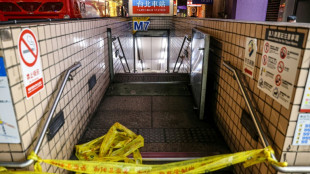 Three killed in Taipei metro attacks, suspect dead
Three killed in Taipei metro attacks, suspect dead
-
Seven Colombian soldiers killed in guerrilla attack: army
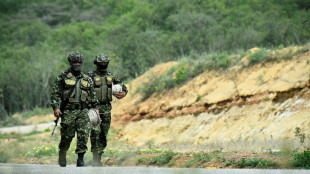
-
 Amorim takes aim at Man Utd youth stars over 'entitlement'
Amorim takes aim at Man Utd youth stars over 'entitlement'
-
Mercosur meets in Brazil, EU eyes January 12 trade deal

-
 US Fed official says no urgency to cut rates, flags distorted data
US Fed official says no urgency to cut rates, flags distorted data
-
Rome to charge visitors for access to Trevi Fountain
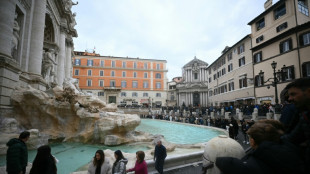
-
 Spurs 'not a quick fix' for under-fire Frank
Spurs 'not a quick fix' for under-fire Frank
-
Poland president accuses Ukraine of not appreciating war support

-
 Stocks advance with focus on central banks, tech
Stocks advance with focus on central banks, tech
-
Amorim unfazed by 'Free Mainoo' T-shirt ahead of Villa clash

-
 PSG penalty hero Safonov ended Intercontinental win with broken hand
PSG penalty hero Safonov ended Intercontinental win with broken hand
-
French court rejects Shein suspension

-
 'It's so much fun,' says Vonn as she milks her comeback
'It's so much fun,' says Vonn as she milks her comeback
-
Moscow intent on pressing on in Ukraine: Putin

-
 UN declares famine over in Gaza, says 'situation remains critical'
UN declares famine over in Gaza, says 'situation remains critical'
-
Guardiola 'excited' by Man City future, not pondering exit

-
 Czechs name veteran coach Koubek for World Cup play-offs
Czechs name veteran coach Koubek for World Cup play-offs
-
PSG penalty hero Safonov out until next year with broken hand


Roads, farming threaten Ecuador 'lost city' complex
Shielded by the jungle for hundreds of years, the remains of a massive 2,500-year-old network of Ecuadoran cities are being threatened by road and farm encroachment just as its long-held secrets are being revealed, researchers say.
Traces of an Amazonian "lost city" were first discovered in 1978, but the full extent of what is now believed to be the largest and oldest such urban expanse were only revealed last year with the help of laser mapping.
The vast site, which covers more than 1,000 square kilometers (385 square miles), lies deep in the Upano valley on the foothills of the Andes mountain range in eastern Ecuador.
It consists of ancient settlements of different sizes, connected by what researchers describe as a complex system of roads.
Archeologists have also identified some 7,400 mounds in various shapes, made by human hands millennia ago.
They stand up to four meters (about 13 feet) tall and five times as wide and are believed to have been the foundations of homes, or communal areas for rituals or festivals.
Some have already been damaged -- wrongly thought by road developers to be natural formations that they could break through.
"There is an urgent need... for a protection plan," said Spanish archeologist Alejandra Sanchez, who has been studying the site for a decade.
Beyond the road construction issue, Sanchez also described the risks posed by erosion, deforestation, and agriculture to the mounds, which she said are "destroyed very easily by rain, wind, plows."
The Upano River, cradle of the Indigenous culture of the same name, is also the victim of voracious mining, both legal and wildcat.
- 'The tip of the iceberg' -
As a first step towards having the site protected, Ecuador's National Institute of Cultural Heritage (INPC) is working on delineating the complex.
The INPC in 2015 started mapping out the area using LiDAR (Light Detection and Ranging) technology, bouncing laser light off buildings or trees to measure landscapes.
The data was shared with archeologists in 2021.
Last year, Sanchez and Argentine researcher Rita Alvarez presented their analysis of the images in an INPC publication.
Then in January, a French-led team reported their own findings based on the mapping data in the journal Science -- giving global news coverage to the discovery.
The site was first described by priest and archeologist Pedro Porras in the 1980s, according to the private Catholic University's Weilbauer-Porras museum in Quito, which displays finely decorated red-tinted vessels, and a piece of volcanic rock carved in a half-human, half-animal shape.
It also houses maps and black-and-white photographs of Porras pointing to the mounds protruding from the ground.
According to researchers who have studied the city network since the 1980s, the Upano people who built it had the political, economic, and religious organization typical of great civilizations.
Construction on the mounds is thought to have begun between 500 BC and 300-600 AD -- around the time of the Roman empire.
Other urban sites discovered in the Amazon date from between 500-1,500 AD.
And while Ecuador may once have "envied" the archeological riches of other Latin American nations, the Upano site matches them in "quantity, grandeur, history and cultural expression," archaeologist Alden Yepez of the Catholic University told AFP.
He believes discoveries so far are only "the tip of the iceberg" of an even bigger civilization, and that the site may extend up to 2,000 square km around the Upano, Palora and Pastaza rivers, where there are also signs of settlements.
"The idea that the Amazon was an unpopulated space or only inhabited by nomads has been discarded," said INPC director Catalina Tello.
S.F.Warren--AMWN


